




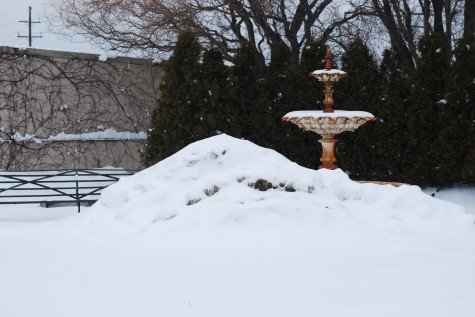
 nn
nn


Deborah Silver is an accomplished and experienced landscape and garden designer whose firm first opened its doors in 1986.






 nn
nn


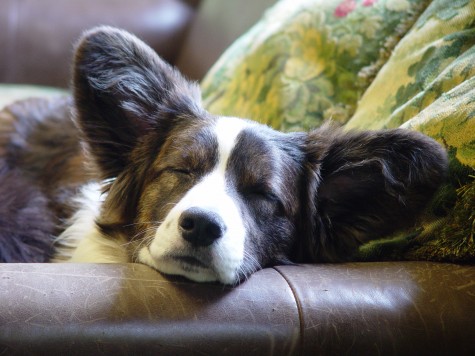


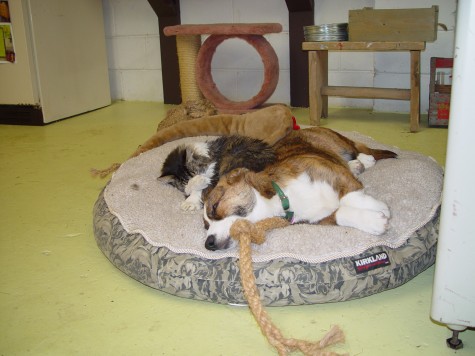


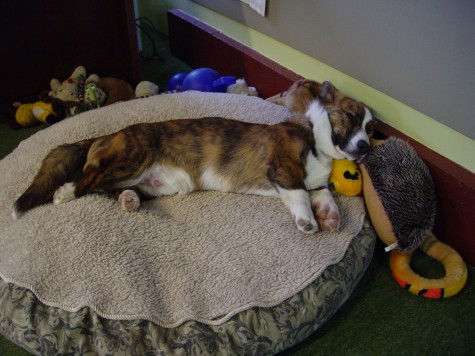

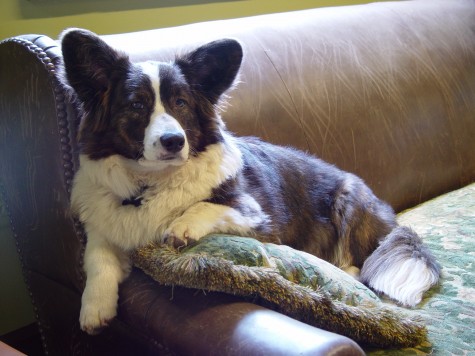

 I would not hesitate for a second, recommending that new plantings be mulched with 2 to 3 inches of bark. Mulch conserves moisture in the soil, and it discourages the germination of weeds. Transplanting is a big shock; a little mulch can be calming. I do not, however, admire decorative mulch, mulch gardens, mulch landscapes, mulch over existing weeds, or mountains of mulch anywhere else beyond a landscape supply yard. Mulch should not be seen or heard from. Whomever designed the landscape pictured above should get a ticket, three points, and a hefty fine. Who would cut giant beds, dot in a few maroon-leaved weigela in no discernable pattern, and call it a landscape? This is a bark garden, just weeks after completion. In a year’s time, the mulch will be a dirty grey, blown about by rain, bikes and wind. All the while organisms in the soil are degrading said bark such that any weed seeds in the soil underneath will soon have optimal conditions to germinate and grow. I shuddered when I saw this, and shuddered again when I realized the clients had no idea the hand that had been dealt to them.
I would not hesitate for a second, recommending that new plantings be mulched with 2 to 3 inches of bark. Mulch conserves moisture in the soil, and it discourages the germination of weeds. Transplanting is a big shock; a little mulch can be calming. I do not, however, admire decorative mulch, mulch gardens, mulch landscapes, mulch over existing weeds, or mountains of mulch anywhere else beyond a landscape supply yard. Mulch should not be seen or heard from. Whomever designed the landscape pictured above should get a ticket, three points, and a hefty fine. Who would cut giant beds, dot in a few maroon-leaved weigela in no discernable pattern, and call it a landscape? This is a bark garden, just weeks after completion. In a year’s time, the mulch will be a dirty grey, blown about by rain, bikes and wind. All the while organisms in the soil are degrading said bark such that any weed seeds in the soil underneath will soon have optimal conditions to germinate and grow. I shuddered when I saw this, and shuddered again when I realized the clients had no idea the hand that had been dealt to them.
 Suburban landscape/ gardens in front yards- in conspicuous lieu of grass-have become quite popular the last ten years or so. Occasionally the news tells the tale of neighbors up in arms over a non-conforming suburban yard whose messy assortment of perennials, vegetables and whatever else threatens to disturb the status quo. The debate about lawn versus garden is immaterial here-this yard is indeed a mess. What I find even more astonishing are the drifts of bark. As if bark over bare dirt,weeds, and some scraggly plants could improve the look here.
Suburban landscape/ gardens in front yards- in conspicuous lieu of grass-have become quite popular the last ten years or so. Occasionally the news tells the tale of neighbors up in arms over a non-conforming suburban yard whose messy assortment of perennials, vegetables and whatever else threatens to disturb the status quo. The debate about lawn versus garden is immaterial here-this yard is indeed a mess. What I find even more astonishing are the drifts of bark. As if bark over bare dirt,weeds, and some scraggly plants could improve the look here.
 No kidding, nature abhors a vacuum. The above pictured bark is a testimonial to the fact that bare or barked dirt stays bare only a short time. Bark slows down weeds at first, but them helps them grow all the more robustly. A forest completely destroyed and buried in volcanic ash will reforest, given enough time. Some landscapes could get that fresh well-tended look if the bark were banished. It is not as if any removal is required. A landscape quick-fix? Plant more of what you already have in your bark beds.
No kidding, nature abhors a vacuum. The above pictured bark is a testimonial to the fact that bare or barked dirt stays bare only a short time. Bark slows down weeds at first, but them helps them grow all the more robustly. A forest completely destroyed and buried in volcanic ash will reforest, given enough time. Some landscapes could get that fresh well-tended look if the bark were banished. It is not as if any removal is required. A landscape quick-fix? Plant more of what you already have in your bark beds.
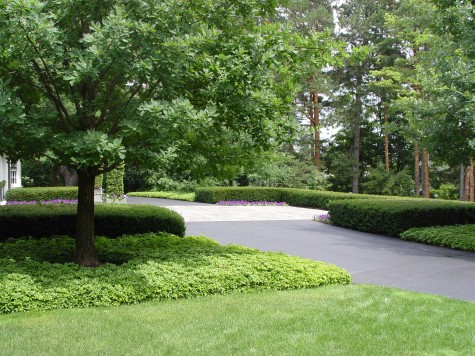 It is difficult to get plants to grow under trees; the shade and competition for water can be daunting. Planting a companion plant at the same time the tree goes in gives everyone involved a chance. I planted rooted cuttings of pachysandra with a weeding fork underneath these English oaks close to ten years ago. The groundcover has taken over the job of the bark. Though a planting of pachysandra is never going to make your heart pound, it is vastly better looking than the bark. The shape and density of growth is enough.
It is difficult to get plants to grow under trees; the shade and competition for water can be daunting. Planting a companion plant at the same time the tree goes in gives everyone involved a chance. I planted rooted cuttings of pachysandra with a weeding fork underneath these English oaks close to ten years ago. The groundcover has taken over the job of the bark. Though a planting of pachysandra is never going to make your heart pound, it is vastly better looking than the bark. The shape and density of growth is enough.
 There are lots of groundcovers for both sun and shade. This dwarf hosta is a happy combination of bold texture and ground hugging scale. Not that a groundcover needs to be short, mind you. Groundcover is anything that covers the ground. For your planting trouble, you get a mass of green that conserves moisture in the soil, and discourages weeds. Does this not sound like a good idea?
There are lots of groundcovers for both sun and shade. This dwarf hosta is a happy combination of bold texture and ground hugging scale. Not that a groundcover needs to be short, mind you. Groundcover is anything that covers the ground. For your planting trouble, you get a mass of green that conserves moisture in the soil, and discourages weeds. Does this not sound like a good idea?
 There is not one thing intrinsically wrong with grass. It is a vigorous groundcover, and it does need to be cut. It is doing amazingly well in the shade of these Bradford pears. It is as much landscape as some people can handle. A grass panel, or sculpture can be strikingly beautiful. Just because a zillion lawn care products exist is no sign you are obliged to use them. Just cut the grass. Even when my garden is weedy and falling over from neglect, I feel better when the grass is cut. I like that illusion of order.
There is not one thing intrinsically wrong with grass. It is a vigorous groundcover, and it does need to be cut. It is doing amazingly well in the shade of these Bradford pears. It is as much landscape as some people can handle. A grass panel, or sculpture can be strikingly beautiful. Just because a zillion lawn care products exist is no sign you are obliged to use them. Just cut the grass. Even when my garden is weedy and falling over from neglect, I feel better when the grass is cut. I like that illusion of order.
 Sweet woodriff is a beautiful groundcover, but it must be sited properly. In too much shade, and in too wet a soil, fungus will prevail in late summer, leaving the garden with brown rotted leaves and bare patches. I am willing to put up with its problems, as it covers the ground under my hellebores so beautifully. My hellebores still seed here, though there is not a square inch of bare dirt to be seen.
Sweet woodriff is a beautiful groundcover, but it must be sited properly. In too much shade, and in too wet a soil, fungus will prevail in late summer, leaving the garden with brown rotted leaves and bare patches. I am willing to put up with its problems, as it covers the ground under my hellebores so beautifully. My hellebores still seed here, though there is not a square inch of bare dirt to be seen.
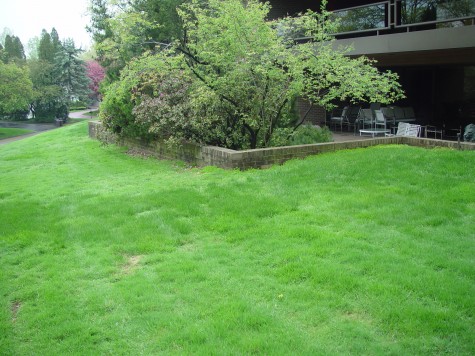 A client with a private garden carved into a hillside asked me to redo the space. The shrubs had become considerably overgrown, and a tree had died. The walled garden on the inside has been totally redone. But I was equally as interested in the street side presentation of the garden. The grass was tough to cut next to the brick wall; the grade was sloppily uneven. I stripped the grass five feet away from the wall, and added 20 yards of soil to level the ground.
A client with a private garden carved into a hillside asked me to redo the space. The shrubs had become considerably overgrown, and a tree had died. The walled garden on the inside has been totally redone. But I was equally as interested in the street side presentation of the garden. The grass was tough to cut next to the brick wall; the grade was sloppily uneven. I stripped the grass five feet away from the wall, and added 20 yards of soil to level the ground.

Five columnar gingko trees of unusual size and shape were planted around the perimeter of the wall retaining that sunken garden.The branches and leaves are beautiful from the second story terrace. I barked the trees, yes, but I also planted hydrangeas as groundcover. Three years later, the view from the street is green. No dirt or bark slides down the hill after a rain. It will take a few years for the trees to grow out of their hydrangea groundcover enough for that relationship to seem right. The secret garden is truly secret now; nothing in the streetside landscape gives it away. It is a gesture with a sporting chance at a future.
 Some landscapes appear and feel spacious for no more complicated a reason than they exist on large properties. The Chicago Botanic Garden has many beautiful long views, as it physically sits on 360 some odd acres. How I visually process space has to do with what is called perspective. If I walk in the Botanic garden, and Daffodil Island is in bloom, the daffodils appear to my eye like tiny yellow dots-and lots of them. Daffodils physically measure up at a fairly decent size, but they appear smaller and smaller, the further away they are from my eye. The position of the eye, relative to an object-perspective. The most dramatic illustration of perspective? Picture yourself 5 feet from the KLM 747 Anna Pavlova; the size is overwhelming. A city with wings. 230 feet long, and wings 200 feet wide-my entire property would hold a quarter of this plane. Only moments after that plane is aloft, it appears as a black speck streaking towards the horizon. Once a black speck, I know it is miles from my eye. These Anamese oil lamps pictured above are on the floor beneath me-I know this, as I am looking at their tops. They are also 10 feet away from my eye.
Some landscapes appear and feel spacious for no more complicated a reason than they exist on large properties. The Chicago Botanic Garden has many beautiful long views, as it physically sits on 360 some odd acres. How I visually process space has to do with what is called perspective. If I walk in the Botanic garden, and Daffodil Island is in bloom, the daffodils appear to my eye like tiny yellow dots-and lots of them. Daffodils physically measure up at a fairly decent size, but they appear smaller and smaller, the further away they are from my eye. The position of the eye, relative to an object-perspective. The most dramatic illustration of perspective? Picture yourself 5 feet from the KLM 747 Anna Pavlova; the size is overwhelming. A city with wings. 230 feet long, and wings 200 feet wide-my entire property would hold a quarter of this plane. Only moments after that plane is aloft, it appears as a black speck streaking towards the horizon. Once a black speck, I know it is miles from my eye. These Anamese oil lamps pictured above are on the floor beneath me-I know this, as I am looking at their tops. They are also 10 feet away from my eye.

Then I move the globes to the surface of a table, and sit down to photograph them; they appear much larger than what they actually are. They are close enough to take up most of my field of vision-so they appear huge. My eyes are on the same horizontal plane as the lamps-I am seeing clearly the side view. Explaining the idea of perspective is difficult, but people instinctively understand and orient themselves to it-via the horizon line. Dense fog on a sunny day is disconcerting, as the horizon disappears. Sometimes at twilight on Lake Superior, the sky is the same silvery blue as the water-your eye cannot pick out the horizon. Where you are standing is not clear.

Milo is my little wide-body, billiard table shaped corgi. He acquired these nicknames, as I am usually looking down on him. His legs are about four inches long; his back some 13 inches off the floor. My eyes are 60 inches off the floor; I see Milo in plan view. Unless he in on the deck, and I am in the yard-is he not a very good looking dog from the side? Before you completely loose interest in this discussion, I will say that an awareness of how perspective works can help create views, and make the smallest urban garden appear spacious. Those gardens smaller yet can be designed with a strong spatial sense. If you are ever going to think about perspective in a landscape, now is the time. Who would want to address it in May? May is for moving a project along, yes?
 I am in the process of putting the shop back together, as we reopen for the 2010 season next week. The logistics of this has been a little daunting, as my on my feet time is somewhat limited yet. Luckily my four wheeler has a seat-so I can take a break. This puts my eye at dining table height. The table and pitchers loom large in the foreground space. The exaggeration of the size of the foreground elements moves the background even further back.
I am in the process of putting the shop back together, as we reopen for the 2010 season next week. The logistics of this has been a little daunting, as my on my feet time is somewhat limited yet. Luckily my four wheeler has a seat-so I can take a break. This puts my eye at dining table height. The table and pitchers loom large in the foreground space. The exaggeration of the size of the foreground elements moves the background even further back.
 Varying the heights and sizes of the foreground elements helps to give the foreground itself dimension. The visual path your eye takes from one object to the next reveals that each object is in a different plane. A recognition of multiple planes makes for the illusion of space. This is after all, a flat object we call a photograph. But visual space is represented here.
Varying the heights and sizes of the foreground elements helps to give the foreground itself dimension. The visual path your eye takes from one object to the next reveals that each object is in a different plane. A recognition of multiple planes makes for the illusion of space. This is after all, a flat object we call a photograph. But visual space is represented here.
 The position and direction of the concrete table in this composition moves the eye into the deep space of the photograph. The table is so wide in the foreground, it runs off the edge of the page. The table width appears much smaller, as the table appears to move back in space. The large masses of table, and lighthouse contrast with the objects on the back wall that appear so small.
The position and direction of the concrete table in this composition moves the eye into the deep space of the photograph. The table is so wide in the foreground, it runs off the edge of the page. The table width appears much smaller, as the table appears to move back in space. The large masses of table, and lighthouse contrast with the objects on the back wall that appear so small.
 Not every bench in a landscape needs to be placed at the end of a garden. Placed at the beginning, with its back to your eye, the sense of space from front to back is exaggerated. The bench back is like a fence-enclosing the space beyond.
Not every bench in a landscape needs to be placed at the end of a garden. Placed at the beginning, with its back to your eye, the sense of space from front to back is exaggerated. The bench back is like a fence-enclosing the space beyond.
 It is important in any composition to direct the eye of the viewer from the front to the back-and out again. The white wood rectangle in this picture frames a view of the foreground appearance of this bench. The frame invites the viewer to focus on what is within the frame. The bench then appears to go back in space-quickly. In the far background-a pair of doors suggesting another space beyond.
It is important in any composition to direct the eye of the viewer from the front to the back-and out again. The white wood rectangle in this picture frames a view of the foreground appearance of this bench. The frame invites the viewer to focus on what is within the frame. The bench then appears to go back in space-quickly. In the far background-a pair of doors suggesting another space beyond.

It is anything but magic to see like this. It only requires that you look long enough to provoke some speculation about how to see spatially. If no light comes on standing in a spot in your garden, take a picture. A picture is a flat object, with four edges-the camera will frame the view, and record your placement of plants and ornament dispassionately.

I read countless gardening books when I first started gardening. None of them gave me one clue about how to see spatially. I could count on most of them to tell me to plant the tall plants in the back, and the short plants in the front. Expecting plants to carry a composition is asking a lot. There are other, maybe more interesting ways of composing. Place some big things in some small spaces. Try some tall things in the foreground space, and some very small things way in the back. Tomato stakes are great for trying different placements. Should you look long enough, you will know where you stand.
Deborah Silver is a landscape and garden designer whose firm, Deborah Silver and Co Inc, opened its doors in 1986. She opened Detroit Garden Works, a retail store devoted to fine and unusual garden ornament and specialty plants, in 1996. In 2004, she opened the Branch studio, a subsidiary of the landscape company which designs and manufactures garden ornament in a variety of media. Though her formal education is in English literature and biology, she worked as a fine artist in watercolor and pastel from 1972-1983. A job in a nursery, to help support herself as an artist in the early 80’s evolved into a career in landscape and garden design. Her landscape design and installation projects combine a thorough knowledge of horticulture with an artist’s eye for design. Her three companies provide a wide range of products and services to the serious gardener. She has been writing this journal style blog since April of 2009.
Copyright © 2024 · Deborah Silver & Co. · Detroit Garden Works